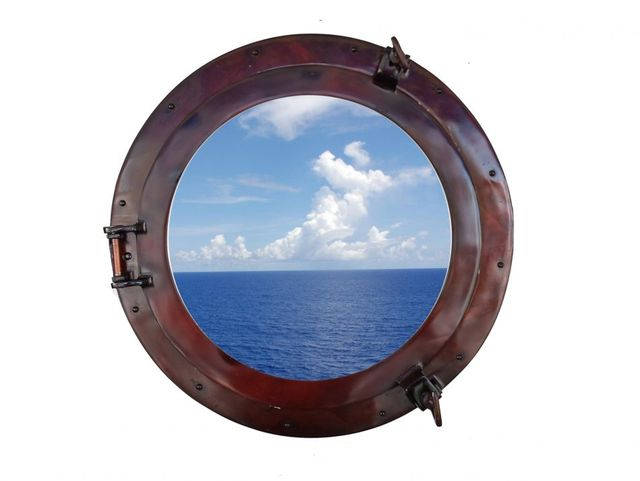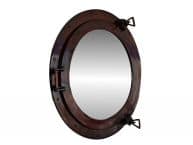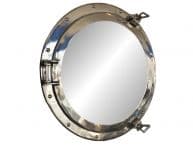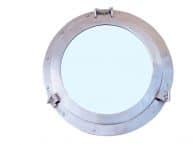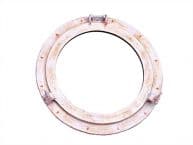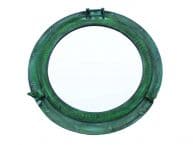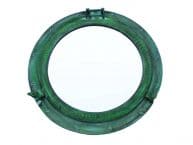|
|
More Products Like This One

|
|

|
Antique Copper Decorative Ship Porthole Window 20"
The distinct design of porthole windows serve an important role aboard any ship or vessel and are much more complex than they seem. With these windows, form follows function as they are stylistically appealing as well as serve a very specific function. In addition to providing light, porthole windows also relieve a bit of the stuffiness of living in such close quarters by providing some fresh air when they are opened. In addition, porthole windows also offer a view to the outside and even though they are small, they still offer a sizeable amount of light and sufficient air to pass through. When closed shut, portholes keep a tight barrier from water entering the ship and the various storms that can surface at sea.
A porthole consists of at least two structural components and is, similar to any other type of window in design and purpose. The porthole is primarily a circular glass disk encased in a metal frame that is bolted securely into the side of a ship's hull. Sometimes the glass disk of a porthole is encased in a separate frame which is hinged onto the base frame so that it can be opened and closed. In addition, many portholes also have metal storm covers that can be securely fastened against the window when necessary. The main purpose of the storm cover is, as its name implies, to protect the window from heavy seas. It is also used to block light from entering lower berths when darkness is preferred. Storm covers are also used on Navy and merchant marine ships to prevent interior light from escaping the ship's lower berths, and to provide protection from hostile fire. Hinged porthole windows and storm covers are accessible from inside the ship's hull, and are typically fastened to their closed positions by hand tightening several pivoting, threaded devices, commonly referred to as "dogs." Older portholes can be identified by the protruding collar of their base plate which may be up to several inches deep, thus accommodating the thickness of a wooden hull.
 Handcrafted
Handcrafted Handcrafted
Handcrafted Handcrafted
Handcrafted Handcrafted
Handcrafted Handcrafted
Handcrafted Handcrafted Model Ships
Handcrafted Model Ships
